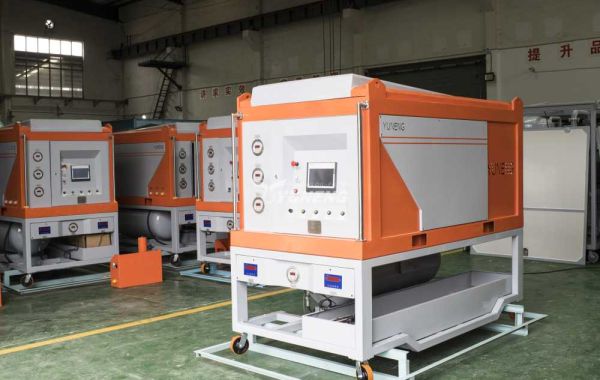In modern electrical systems, SF6 (sulfur hexafluoride) gas plays a vital role in ensuring the safe and efficient operation of high-voltage equipment. However, its potential environmental impact has led to increased scrutiny and the need for SF6 gas recovery and recycling technologies. This article explores the significance of SF6 gas recovery, recycling, and refilling in the context of transformer maintenance and how these practices contribute to sustainability in the electrical industry.
SF6 Gas Recovery: An Integral Process in Transformer Maintenance
SF6 gas recovery is the process of safely collecting SF6 gas from electrical equipment such as transformers, circuit breakers, and switchgear when they are being serviced or decommissioned. The gas is then stored for future use or recycling. The process ensures that SF6 emissions are minimized, contributing to a more environmentally friendly electrical industry.
The SF6 gas recovery process typically involves using specialized equipment to evacuate the gas from the electrical equipment, and then filtering it to remove any contaminants such as moisture and acid. Once the gas has been purified, it can be reused or refilled into the same or other equipment. This helps reduce the need for new SF6, which is costly and contributes to environmental damage if not properly managed.
SF6 Gas Recycling: Turning Waste into a Resource
SF6 gas recycling is an important part of the recovery process, as it ensures that recovered gas is purified and made ready for reuse. SF6 gas can become contaminated with moisture, acid, and other impurities over time, which can degrade its performance as an insulating and arc-quenching medium. Recycling SF6 gas removes these contaminants, restoring the gas’s effectiveness and enabling it to be used again.
YUNENG’s SF6 gas recycling systems are designed to efficiently purify and clean the recovered gas. The systems use advanced filtration and dehydration technologies to remove harmful contaminants, ensuring the gas is safe for refilling back into equipment.
SF6 Gas Refilling: Maintaining Transformer Performance
Once SF6 has been purified through the recycling process, it can be used for SF6 gas refilling. Refilling transformers and other high-voltage equipment with properly purified gas ensures that the equipment maintains its dielectric strength and can effectively insulate and quench arcs during operation.
The SF6 gas refilling process requires precision, as over- or under-filling can affect the transformer’s performance and safety. YUNENG’s SF6 gas recovery and refilling equipment is designed to provide accurate measurements and ensure that transformers are refilled with the exact amount of gas needed, maintaining the equipment’s optimal operating conditions.
Best Practices for SF6 Gas Handling
Handling SF6 gas safely is of utmost importance due to its potential risks, both to human health and the environment. Implementing safety practices during SF6 gas recycling, recovery, and refilling can significantly reduce these risks. Below are some essential safety measures to consider:
- Leak Detection: Regular leak testing using advanced detection equipment is critical in preventing any unintended release of SF6 gas during recovery and refilling operations.
- Proper Ventilation: Ensure that the area where SF6 gas recovery and refilling occurs is well-ventilated to prevent the accumulation of any gas that might escape during handling.
- Personal Protective Equipment (PPE): Technicians working with SF6 gas must wear proper PPE, including gas masks, gloves, and protective suits, to protect themselves from potential exposure.
- Training and Certification: Workers must be properly trained in the safe handling of SF6 gas, including recovery, recycling, and refilling procedures. Certification ensures that only qualified personnel are involved in these processes.
- Maintenance and Inspections: Regular maintenance of SF6 gas recovery equipmentis necessary to ensure that all machinery is functioning properly and that no leaks or malfunctions occur.
Conclusion
The effective management of SF6 gas through SF6 gas recovery, recycling, and refilling is crucial for ensuring the sustainability and safety of electrical systems. As SF6 continues to be an essential medium for insulation and arc-quenching in transformers and other high-voltage equipment, its proper handling is paramount to both environmental protection and operational efficiency. By adopting YUNENG’s advanced SF6 gas recovery and refilling equipment, electrical companies can optimize the life cycle of their equipment, reduce environmental impact, and improve overall safety. Implementing robust safety measures further enhances the benefits of these processes, ensuring that SF6 gas handling remains safe, efficient, and environmentally responsible.








